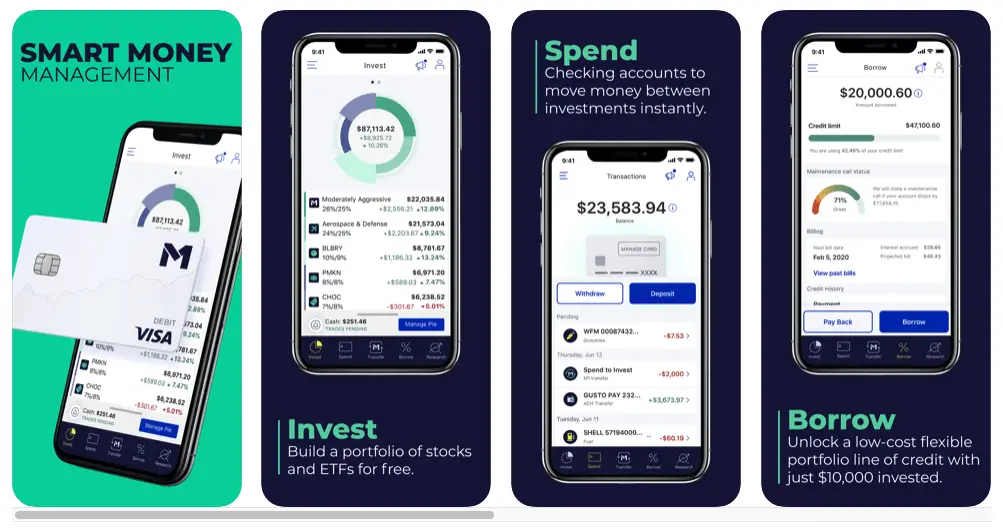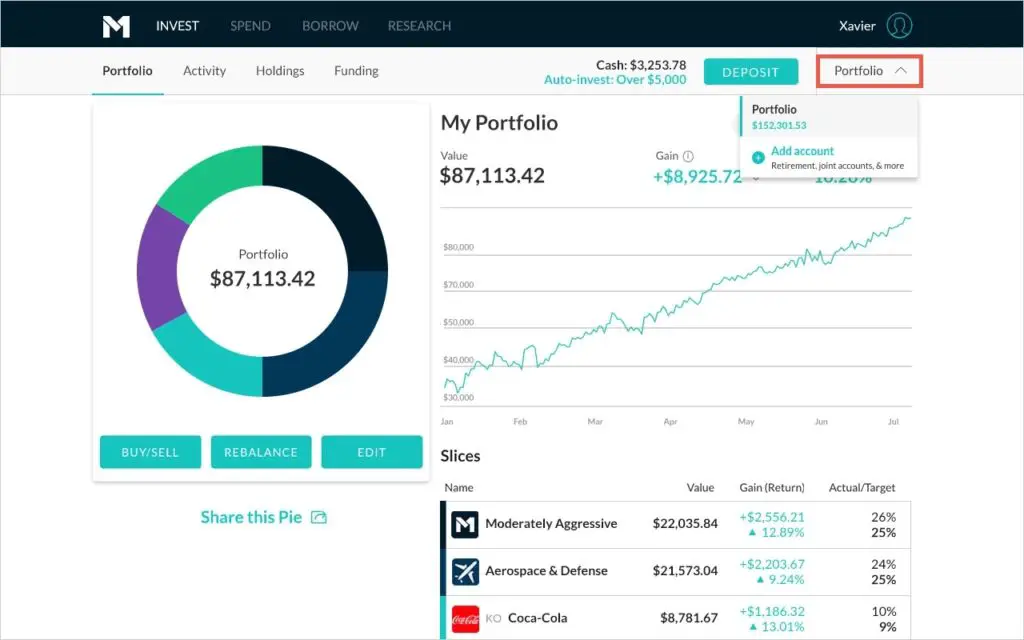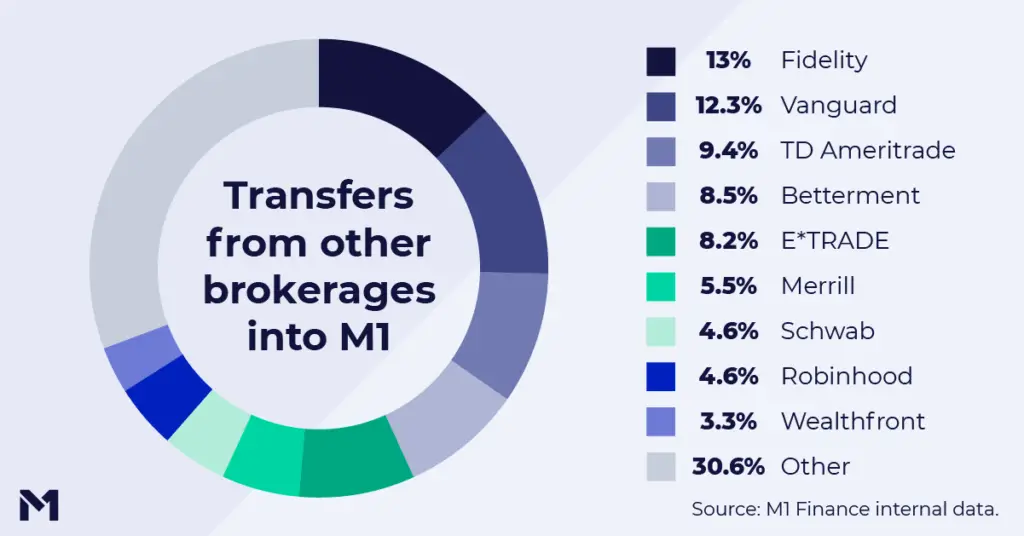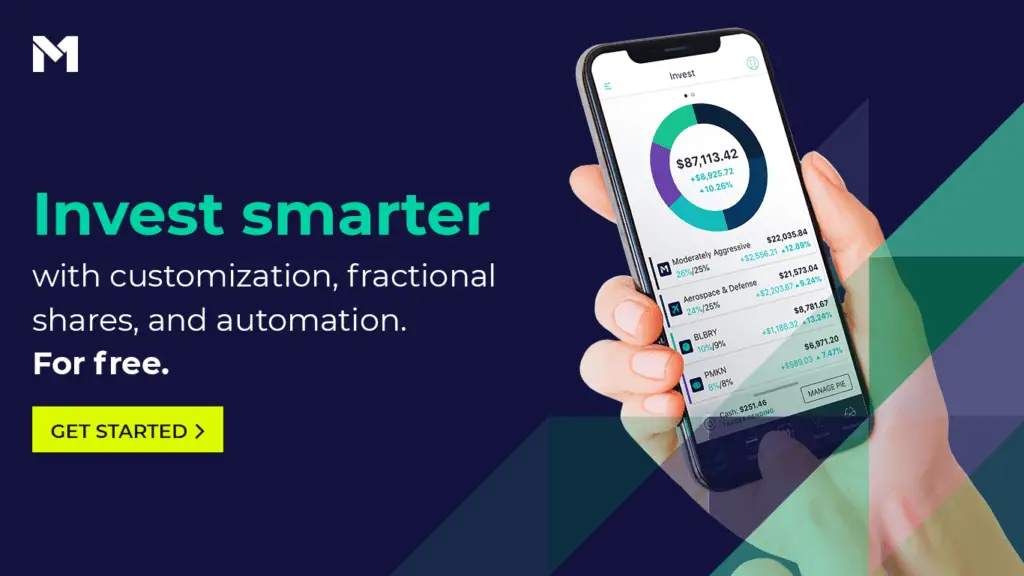
Merrill Edge has made recent consumer-friendly advances in the race to the bottom for fees and commissions. Here we'll compare Merrill Edge and M1 Finance. I wrote a separate comprehensive review of M1 Finance here if you're interested in seeing the specifics of the platform.
Disclosure: Some of the links on this page are referral links. At no additional cost to you, if you choose to make a purchase or sign up for a service after clicking through those links, I may receive a small commission. This allows me to continue producing high-quality content on this site and pays for the occasional cup of coffee. I have first-hand experience with every product or service I recommend, and I recommend them because I genuinely believe they are useful, not because of the commission I may get. Read more here.
M1 Finance vs. Merrill Edge – Summary Comparison
Contents
M1 Finance vs. Merrill Edge – Commissions and Fees
M1 Finance and Merrill Edge both offer commission-free trades for stocks and ETF's, and zero account fees, aside from miscellaneous service fees for things like paper statements, outbound account transfers, etc.
Merrill Edge does have some fees for other types of securities:
- Options: $0.65 per contract
- Mutual Funds: $19.95
Merrill Edge has several fee-based professional portfolio services:
- Merrill Guided Investing – 0.45% of invested balance. This service provides a professionally-built portfolio but no human advising. Minimum investment of $5,000.
- Merrill Guided Investing with Advisor – 0.85% of invested balance. This service provides a professionally-built portfolio with professional advising. Minimum investment of $20,000.
M1 Finance does not offer human advising, but has pre-built portfolios (called “Model Portfolios”) that you can invest in free of charge.
Merrill Edge's fees are comparatively higher than most other traditional brokers like Schwab for essentially the same product. These fees may not sound like much, but let's look at how they affect your portfolio's value over time:

Using a starting balance of $100,000, $1,000 contributed monthly over 30 years, and an annualized rate of return of 8%, Merrill Edge's 0.45% fee costs you $233,323 in fees. The higher 0.85% fee costs you $420,766 in fees.
Notice how the value differences become more pronounced near the end of the investing horizon when the account value is larger. Such is the power of compound interest, in this case unfortunately working against you.
M1 Finance vs. Merrill Edge – Account Types
M1 Finance offers Individual, Joint, Traditional IRA, Roth IRA, Rollover IRA, SEP IRA, Trust, and Custodial accounts. They currently do not offer SIMPLE IRA, 401(k), Solo 401(k), 529, HSA, or Non-Profit accounts.
Merrill Edge offers all of M1's account types plus SIMPLE IRA, 529, and business accounts.
If you need any of the latter accounts, Merrill Edge would be the better choice.
Bank of America acquired Merrill Edge in 2008, so you can integrate a Bank of America checking account with your Merrill Edge investing account. M1 Finance offers an optional FDIC-insured checking account with debit card.
M1 Finance vs. Merrill Edge – Investment Products
M1 Finance offers most ETF's and individual stocks traded on major exchanges.
Merrill Edge offers ETF's, individual stocks, mutual funds, and options contracts.
Neither platform offers over-the-counter (OTC) stocks aka “penny stocks,” cryptocurrency, futures, or forex. Merrill Edge used to offer OTC stocks but stopped in September 2018.
Note that Merrill also weirdly blocks certain securities they deem “too risky for the average investor,” of which their criteria are undisclosed. Annoyingly, this includes anything with any semblance of being an “active” fund, even ETFs like those from Avantis, WisdomTree's NTSX, and leveraged ETFs.
M1 Finance vs. Merrill Edge – Margin
M1 Finance handily beats Merrill Edge on margin rates. Margin rates are here.
M1 Finance vs. Merrill Edge – Mobile App
M1 Finance has a sleek, modern, user-friendly, robust mobile app for both Apple iOS and Android. Here is M1's app:

Merrill Edge has made recent advancements to their apps, but I still find it much less attractive and less intuitive than M1's app. Users do seem to complain specifically about the Merrill Edge Android app. Here are some screenshots from the Merrill Edge mobile app:

M1 Finance vs. Merrill Edge – Interface/Usability
While Merrill Edge's mobile app is decently solid, the desktop web-based interface is still somewhat antiquated in my opinion, and will likely be harder to navigate for novice investors.
The Merrill Edge user interface looks like this:

The M1 Finance interface is modern, simple, and intuitive with its pie-based visualization. It should be much easier to navigate, especially for novices. It is great for beginner and experienced investors alike:


M1 Finance vs. Merrill Edge – Extra Features
As a full trading brokerage, Merrill Edge obviously has a few more education and analysis resources than M1 Finance, though perhaps not as many as one might expect from an options trading brokerage.
Merrill Edge obviously has an all-day trading window and order control. Since M1 Finance is built for long-term, buy-and-hold investing, and not for day trading, M1 has a once-daily trading window and no order control.
M1 Finance features “dynamic rebalancing,” a rebalancing feature that automatically directs new deposits to specific assets to maintain your portfolio's target weights. Merrill Edge only offers this feature in their aforementioned fee-based professional services. If you want a set-and-forget portfolio with M1, they offer pre-built “Model Portfolios.”
M1 Finance offers fractional shares for all investment products, which allows every dollar to work for you and allows you to buy small pieces of high-share-price stocks. This is especially important for beginner investors with a small amount of capital. Merrill Edge does not support fractional shares.
M1 Finance vs. Merrill Edge – Summary and Conclusion
- Both M1 Finance and Merrill Edge offer zero-commission trades and zero fees for most stocks and ETF's traded on major exchanges. Merrill Edge does have fees on options contracts and mutual funds.
- Merrill Edge has a few more account types than M1 Finance, namely SIMPLE IRA, 529, and business accounts.
- M1 Finance offers most ETF's and individual stocks. Merrill Edge adds mutual funds and options contracts. Neither platform offers OTC stocks (“penny stocks”), forex, or futures. Don't expect to be able to trade any semi-sophisticated or active funds on Merrill if your net worth is below $10M.
- M1 Finance offers much lower margin rates than Merrill Edge.
- Merrill Edge has a less intuitive, somewhat antiquated desktop user interface that would be more suitable for seasoned investors and traders. M1 Finance has a simple and intuitive desktop interface.
- Both M1 Finance and Merrill Edge seem to have great mobile apps. Merrill's mobile app is slightly less intuitive than M1's, and Android users specifically complain about Merrill Edge's mobile app.
- M1 Finance offers fractional shares. Merrill Edge does not support fractional shares.
- M1 Finance has automatic rebalancing. The only way to get automatic rebalancing with Merrill Edge is via their fee-based professional services.
- Merrill Edge has the typical order control and all-day trading window that one would expect from a traditional brokerage platform. M1 does not offer order control and only uses one trading window per day.
- M1 Finance offers its pre-built “Model Portfolios” for free. M1 is also probably better if you want to implement a “lazy portfolio” and have it rebalance automatically.
- M1 Finance brings a social aspect to investing, allowing you to share your Custom Pies via a hyperlink.
I think M1 Finance clearly beats Merrill Edge on most fronts. If you need access to things like options contracts, a SIMPLE IRA, and/or an all-day trading window, for example, which M1 Finance doesn't provide, you'd obviously need to go with Merrill Edge. But then if you're going with a traditional brokerage, I would suggest Charles Schwab is likely a better choice.
If you don't need those things and want access to fractional shares, automatic rebalancing, and cheaper margin, M1 Finance is the better choice. I wrote a separate comprehensive review of M1 Finance here if you're interested in seeing the specifics of the platform.
With other traditional brokers like Fidelity and Schwab also making strides to attract a younger audience by improving and modernizing their interfaces, apps, and features, even in just the past few months, I think Merrill Edge still has some catching up to do.
I've talked to people who have accounts across both brokers – Merrill Edge for mutual funds and options trading, and M1 Finance for a taxable account to access extremely cheap margin and “fun” stock picking with fractional shares and automatic rebalancing. Merrill Edge is actually one of the brokerages that M1 users transfer from most often:

Disclaimer: While I love diving into investing-related data and playing around with backtests, this is not financial advice, investing advice, or tax advice. The information on this website is for informational, educational, and entertainment purposes only. Investment products discussed (ETFs, mutual funds, etc.) are for illustrative purposes only. It is not a research report. It is not a recommendation to buy, sell, or otherwise transact in any of the products mentioned. I always attempt to ensure the accuracy of information presented but that accuracy cannot be guaranteed. Do your own due diligence. I mention M1 Finance a lot around here. M1 does not provide investment advice, and this is not an offer or solicitation of an offer, or advice to buy or sell any security, and you are encouraged to consult your personal investment, legal, and tax advisors. Hypothetical examples used, such as historical backtests, do not reflect any specific investments, are for illustrative purposes only, and should not be considered an offer to buy or sell any products. All investing involves risk, including the risk of losing the money you invest. Past performance does not guarantee future results. Opinions are my own and do not represent those of other parties mentioned. Read my lengthier disclaimer here.

Are you nearing or in retirement? Use my link here to get a free holistic financial plan and to take advantage of 25% exclusive savings on financial planning and wealth management services from fiduciary advisors at Retirable to manage your savings, spend smarter, and navigate key decisions.

Been enjoying your content recently – thanks for all the great articles.
Appreciate you noting that Merrill blocks trades from Avantis and some from Wisdom Tree. Am I correct to assume that they allow trades for DLS? Also, out of curiosity, is Merrill alone in blocking Avantis ETF’s, or is that shared by other major brokers (Schwab, ex.)?
Thanks again!
Thanks, Clif! Not sure about DLS. I’d like to think they wouldn’t block that, but it seems to be a toss-up for any given ETF that even resembles anything close to “active,” which is a shame. Should be exclusive to Merrill and is not shared by other brokers like Schwab, Fidelity, TDA, etc.